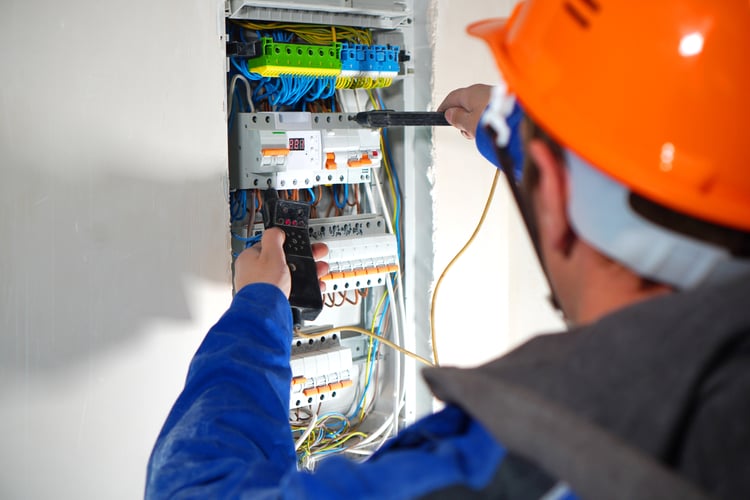The Ultimate Guide to Electrical Installation: Tips and Techniques for a Safe and Effective Home Electrical Wiring System
In the world of home maintenance, couple of aspects are as important yet commonly forgotten as the electric wiring system. By checking out the nuances of electric safety steps and energy-saving practices, this detailed overview will lose light on the complexities of home circuitry, encouraging people to take cost of their home's electrical facilities.
Understanding Electrical Precaution
To make certain the safety of both individuals and property, understanding and implementing correct electric safety and security actions is paramount in any kind of home circuitry job. It is critical to perform an extensive evaluation of the electrical system before beginning any kind of circuitry project to determine potential hazards or problems that need to be resolved.
In addition, making use of the proper tools and tools is important for keeping safety throughout electric setups. Insulated handwear covers, voltage testers, and safety glasses are a few of the basic safety gear that need to be used to avoid electrical shocks or accidents. It is also vital to de-energize circuits prior to dealing with them and to classify all circuits and breakers clearly to avoid complication.

Vital Devices for Home Wiring
Ensuring the appropriate implementation of electric security procedures in home circuitry tasks involves utilizing a particular collection of crucial tools designed to assist in the installation procedure efficiently and securely. Some of the trick tools required for home electrical wiring tasks consist of a voltage tester for examining live wires, cable strippers for removing insulation from cords, a wire cutter for exactly reducing cords to length, a screwdriver set for safeguarding electric elements, electrical tape for insulation and securing connections, a cord ripper for removing cable sheathing, and a multimeter for measuring voltage, present, and resistance.
Step-by-Step Electric Installation Overview
Beginning an electric installation project calls for precise preparation and adherence to safety and security standards. Before starting any type of job, guarantee you have an in-depth plan detailing the format of the electric system, including the placement of outlets, buttons, and fixtures. Consider the power demands of each tool to identify the appropriate cord gauge and breaker dimensions.
The very first step in the setup process is to shut off the power supply to the location where you will be functioning. Make use of a voltage tester check this site out to validate that the circuits are de-energized prior to touching any kind of cords. Next, thoroughly get rid of existing components or outlets and separate the cords.
When mounting new electrical wiring, run cords via walls and ceilings, safeguarding them in position with ideal installations. Comply with local building regulations and supplier directions for proper cable installation and connections. BRE Automation Australia. Make certain to identify wires for easy recognition and future upkeep

Troubleshooting Common Wiring Issues
Having actually finished the setup process as outlined in the previous subtopic, repairing usual circuitry issues is an essential skill for making sure the safety and security and capability of your electrical system. To address this, check and tighten all cable links in the why not try these out affected components and buttons and redistribute the load on the circuit to stabilize the electrical need. Consistently inspecting and promptly attending to these common wiring problems will keep the security and performance of your home electrical system.
Tips for Energy-saving Electric Systems
For optimal power efficiency in electrical systems, applying smart methods and using energy-saving technologies is extremely important. One vital idea for achieving an energy-efficient electric system is to update to LED lights. LED light bulbs consume substantially less power than standard incandescent light bulbs and have a longer lifespan, making them a cost-effective option in the lengthy run. In addition, setting up programmable thermostats can help regulate heating and cooling down systems, reducing power waste when no person is home. One more technique is to purchase energy-efficient home appliances that are ENERGY STAR certified, guaranteeing they meet high standards for energy performance. Proper insulation and sealing of home windows, doors, and electric outlets can likewise avoid energy loss, ultimately lowering the workload on electric systems. Consider integrating sustainable energy i was reading this resources like solar panels to additional decline dependence on standard power grids. By including these energy-efficient ideas and modern technologies, homeowners can not only save cash on their electrical power bills but additionally lower their environmental effect.
Conclusion
To conclude, applying correct security measures, utilizing vital tools, adhering to a step-by-step installment guide, fixing common concerns, and incorporating energy-efficient ideas are critical for a secure and effective home electrical wiring system. By sticking to these practices, home owners can ensure the longevity and functionality of their electrical installments. It is necessary to prioritize safety and security and effectiveness when it pertains to electrical job in order to avoid prospective dangers and to preserve a dependable electric system in the home.